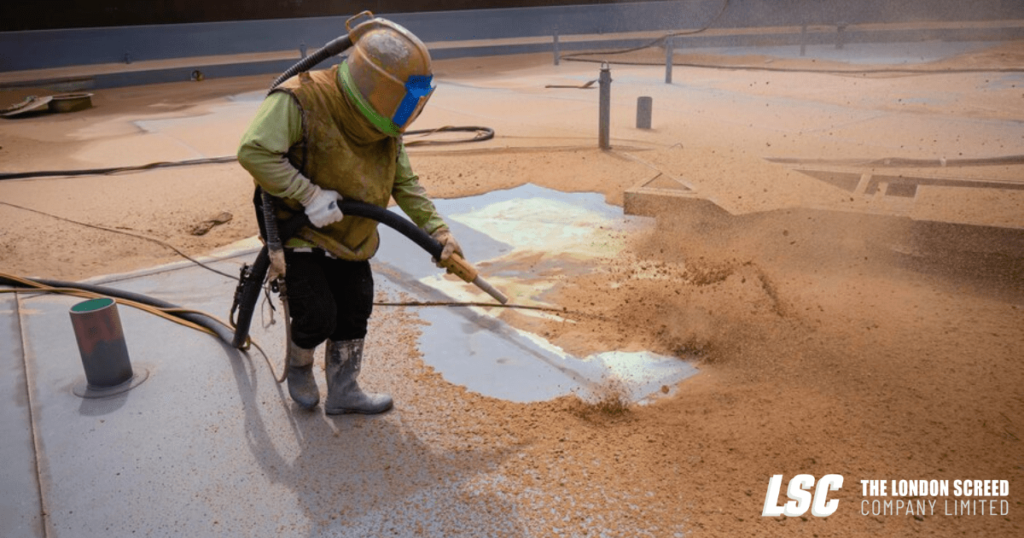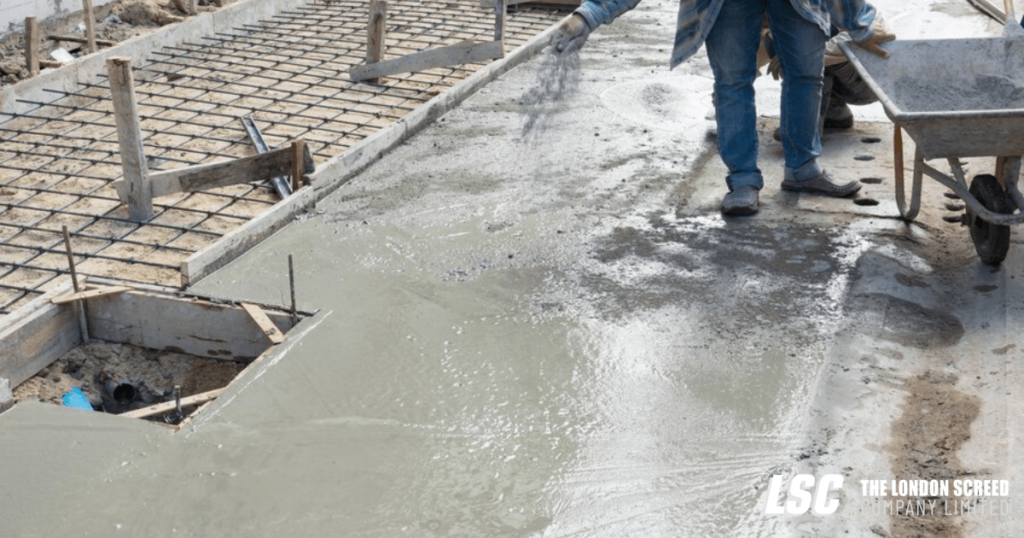Advantages of Anhydrite Liquid Screed over Sand and Cement

Liquid anhydrite screed, known as a calcium-sulfate screed, is a self-adjusting mixture used in flooring applications. It is made of water, calcium sulfate, and other additives to upgrade its attributes. On the contrary to traditional, anhydrite liquid screed provides several benefits that make it a considerable choice for liquid floor screeds.
Difference between Liquid Anhydrite and Sand and Cement
Properties and composition:
Liquid anhydrite is composed of calcium sulfate, going through a reaction with water to create a smooth, level surface. On the other hand, sand and cement screeds require mixing with water and other additional additives for appropriate consistency. Anhydrite liquid offers superior flowability and self-balancing properties, securing an even surface without a need for large-scale labor.
Application process:
In comparison to sand and cement, liquid anhydrite is relatively easy to apply. We can put it directly onto the substrate and evenly distribute it with a screed pump or leveling equipment. It leads to a faster installation time and lowers the danger of human error.
Durability and Strength
Liquid anhydrite is as strong and durable as standard sand and cement screed, if not strong enough. It creates a dense, uniform covering that can sustain large loads and foot activity. Furthermore, its self-leveling qualities reduce the likelihood of surface defects and cracking over time.
Installation of underfloor heating and liquid screed
Underfloor heating systems use pipes beneath the floor surfaces to circulate warm water, providing efficient and uniform heating across a space. This kind of heating has many advantages over typical radiator systems, including increased energy efficiency and comfort.
Moreover, underfloor heating distributes heat more uniformly than radiators, preventing cold spots and giving consistent warmth from floor to ceiling. It also provides greater flexibility in interior design because no huge radiators are taking up wall space. Furthermore, underfloor heating systems use lower temperatures, which reduces energy consumption and heating costs.

Benefits of Anhydrite Liquid Screed
Faster Installation
One of the prominent advantages of liquid anhydrite is its quick installation time.
Unlike sand and cement, which require curing and drying time, anhydrite liquid screeds dry quickly, giving you faster access to the floor surface. It can dramatically shorten construction times and minimize project delays.
Improved thermal conductivity
anhydrite liquid screeds have thermal conductivity, making them a good choice for underfloor heating systems. It provides for excellent heat transfer, resulting in even warmth distribution across the floor surface. It can lead to energy savings and increased comfort levels in indoor settings.
Reduced cracking
Traditional sand and cement screeds are prone to cracking, particularly in large or wide regions. Liquid anhydrite’s self-leveling properties aid in reducing the occurrence of cracks by producing a smooth, uniform surface. It improves the overall appearance and durability of the flooring system.
Environment friendly
Due to its smaller carbon footprint, anhydrite liquid screed is considered to be a more environmentally benign material than sand and cement. It uses less natural resources and generates less waste after installation. Furthermore, the optimal use of materials can help us to promote sustainable building practices.
Cost efficient
Sand and cement floor screed costs less than other forms of screed. Mostly, because it’s a mix of jagged sand, cement, and water, our screeds are ready-mixed and may be trowelled into position by our specialists, which helps save labor expenses.
Material costs
Although liquid anhydrite costs slightly more than sand and cement initially, it ultimately proves to be more cost-effective when considering the time it takes to install liquid screed and the savings on labor. Faster installation can lead to lower labor costs and reduced onsite expenses.
Labor costs
Liquid anhydrite’s ease of application and self-leveling qualities can significantly lower floor-screeding labor costs. Contractors may finish projects more efficiently, using fewer human hours and resources. Utilizing liquid screed services results in cost reductions for both builders and homeowners.
Versatility in application
Sand and cement screed can be used on suspended or in-situ concrete floors, either as a topcoat to light aggregate screeds or as part of a floating floor to improve acoustic or thermal performance. A kind of screed can be smoothed to prepare your subfloor for a final flooring layer, but it can also used as the final finished surface.
Residential Building
Liquid anhydrite is preferable in residential buildings due to its ease of installation and high performance. It is suited for a variety of floor finishes, including tiles, hardwood, and carpet, making it an adaptable choice for homeowners.
Commercial Spaces
Liquid anhydrite is durable and long-lasting in commercial environments such as offices, retail establishments, and healthcare institutions, even in high-traffic areas. Its quick drying period reduces disruption to business activities, allowing you for quick occupancy of freshly built or renovated premises.
Industrial Settings
In industrial settings where chemical resistance and durability are critical, liquid anhydrite is considered a good flooring option. Its smooth texture and resistance to abrasion make it excellent for warehouses, industrial plants, and processing facilities.
Liquid anhydrite has many advantages over typical sand and cement screeds, including faster installation, better heat conductivity, less cracking, and environmental friendliness. Its affordability, diversity, and durability make it a popular choice for flooring solutions in residential, commercial, and industrial environments.
